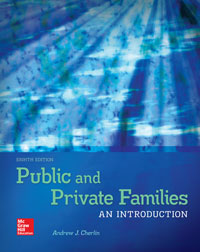Public Finance 10th Edition By Hyman – Test Bank
Chapter 4
Public Goods
Instructional Objectives
Chapter 4 discusses the properties of public goods. The concept of a pure public good is developed and contrasted with the concept of a pure private good. Many examples are given to help students understand the important differences between these two types of goods. In addition, students are shown the important distinction between the demand curves for pure public goods and pure private goods. Throughout the chapter, the theory of externalities is applied to emphasize the fact that market provision of pure public goods is unlikely to be an efficient alternative. Intermediate cases between pure public goods and pure private goods are also analyzed. Congestible public goods and price-excludable public goods are explicitly considered along with many examples of other intermediate cases. The goal here is to make students aware of the fact that it is difficult to generalize about actual arrangements used to provide public goods.
An important goal of this chapter is to derive the efficiency conditions for a pure public good. In deriving these conditions, I emphasize the external benefit associated with the provision of pure public goods. In this way, students see that the consumption of a unit of a pure public good by any one person results in external benefits to all others. A pure public good, therefore, requires the annual output up to the point at which the sum of the marginal benefits of all consumers equals the marginal costs of making the good available. The sum of the individual marginal benefits is the marginal social benefit of each unit of the pure public good.
An extended numerical example dealing with the provision of security protection in a small community is used to derive the efficiency conditions and to illustrate a Lindahl equilibrium. The model of cooperative supply for a pure public good shows the student how the efficient output of a pure public good could be provided in a small community without government. It sets the stage for analysis of the free-rider problem and provides a basis for understanding why government supply with compulsory taxation emerges in large groups.
Changes in This Edition
The discussion of national defense and homeland security has been updated.
Chapter Outline
The Characteristics of Public Goods
Pure Public Goods and Pure Private Goods
An Example: Bread versus Heat
Provision of Private Goods and Public Goods: Markets and Government
Congestible Public Goods and Private Goods with Externalities
Education as a Public Good
The Demand for a Pure Public Good
Efficient Output of a Pure Public Good
A Numerical Example
A Cooperative Method of Efficiently Supplying Pure Public Goods: Voluntary Contributions and Cost Sharing
The Lindahl Equilibrium
Generalizing the Results
Public Policy Perspective: National Defense and Homeland Security
The Free-Rider Problem
Compulsory Finance
Global Perspective: The Marginal Cost of the Persian Gulf War to the United States and How International Cost-Sharing Financed It
Major Points and Lecture Suggestions
1. Students easily catch on to the distinctions between pure public goods and pure private goods. Television programming is an excellent example of a good that is nonrival in consumption. An improvement in environmental quality through a reduction in air pollution provides a good example of a good whose benefits are nonexclusive. You can also point out that the transactions costs of excluding consumers depends on current technology. Improvements in technology can reduce the transactions costs of pricing goods and thereby subject them to exclusion. A pure public good is both nonrival and nonpriceable.
2. I believe that it is important to relate the theory of public goods to the theory of externalities. This helps students understand why pure public goods are unlikely to be efficiently supplied through markets. A pure public good is one whose market exchange would result in positive externalities to all citizens of a nation.
3. I also like to emphasize that the nonrival characteristic of a pure public good implies that the marginal cost of accommodating an additional consumer is zero for a given quantity of the good. Use Figure 4.1 in the text to make the distinction between the marginal cost of producing another unit of the good and the marginal cost of allowing another consumer to enjoy a given quantity of the good.
4. Students like the bread versus heat example. To make the point more strongly, I usually adjust the thermostat level in the classroom to emphasize that there is no way I can change the temperature for myself without changing it for everyone else in the room.
5. When discussing the difference between demand curves for pure public and pure private goods, point out that for private goods consumers have freedom to move along the quantity axis, given price. For the pure public good, consumers must move along the quantity axis together.
6. Cooperative supply of pure public goods requires a means of allowing consumers to express their valuation of additional units of pure public goods. The marginal social benefit of any given quantity
of a pure public good is the sum of the individual marginal benefits of all consumers. To achieve efficiency, this must equal the marginal social cost of the good.
7. The security guard example is quite realistic. Some students may in fact live in condominiums where the problem of providing security must be confronted and financed. I recommend going through the example in class. I have been very careful in the text to point out that a person’s tax is stated as a certain amount per unit of the pure public good. Other texts are often sloppy on this point, and it leads to endless student confusion. The total tax bill in equilibrium for each member of the community is their tax per unit multiplied by the number of units supplied. The numerical example makes this clear.
8. Students readily see that the Lindahl equilibrium is efficient. The Lindahl prices are tax shares per unit of the public good equal to each person’s marginal benefit at the output for which MSB = MSC.














Reviews
There are no reviews yet.